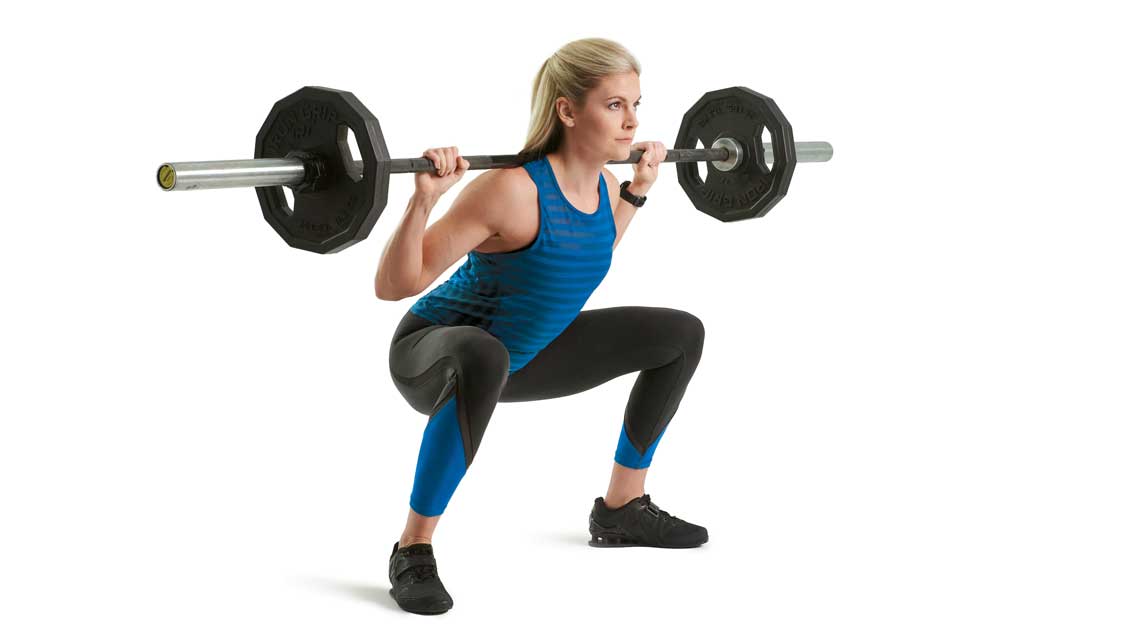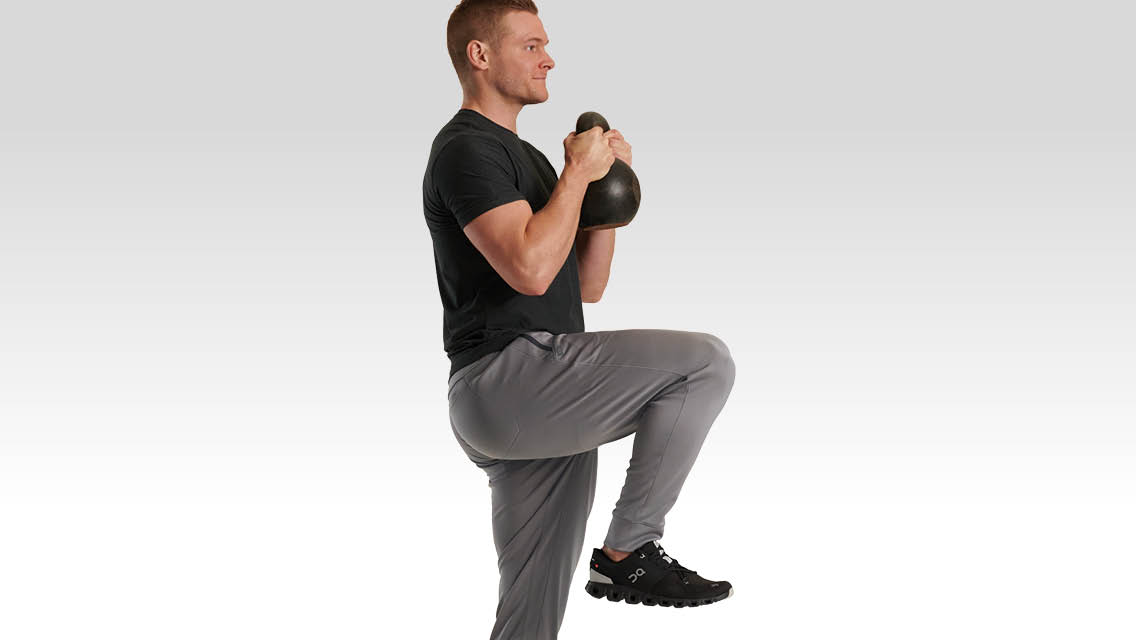See the 7 Sumo Squat Variations
While it’s tempting to pursue the goal of the “perfect” squat, squatting is as unstandardized as the human body. The sumo squat is a popular, body-friendly variation.
Also known as a wide-stance or wide-legged squat, the sumo squat calls for a broader-than-standard setup: feet 3 to 4 feet apart and toes pointed out about 45 degrees. This has several advantages:
- Like its standard cousin, the sumo squat works the glutes, quads, hamstrings, hip flexors, calves, and core. At the same time, it places greater emphasis on the hips as well as the adductor muscles of the inner thighs.
- The sumo stance may be more comfortable for taller people or those with back or hip issues.
- Another body-affirming benefit: It makes room for bodies with more mass, especially in the midsection and lower body, allowing movement through a full range of motion.
- People limited by back or hip issues may find squatting with a wider stance to be more comfortable.
- The sumo stance can be applied to any other squat variation — such as body-weight, back, front, or goblet — and is a sanctioned setup for powerlifters.
Avoid taking a too-big or too-small stance, and practice patience: growing accustomed to and building strength in this position may take time.
Additional Form Tips
The following tips and cues can help you safely attempt this squat alternative.
1. Stand with your feet wide and turn your toes out 45 degrees.
2. Brace your core and, with control, bend your knees and hips to squat down until your thighs are about parallel to the ground. Don’t let your knees cave inward.
Tips: Engage your inner thighs and hips to track your knees over your feet. Keep your chest up and maintain a neutral spine, neither overly arched nor overly curved.
3. Press through your feet to stand up. Think about spreading the floor with your feet and externally rotating at the hips as you rise.
Tip: Keep your heels on the floor.
7 Sumo Squat Variations
1) Sumo-Stance Body-Weight Squat
Full Instructions Body-Weight Variation
- Perform a sumo-stance squat without any additional weight.
2) Sumo-Stance Barbell Back Squat
Full Instructions Barbell Back Squat Variation
- Perform a sumo-stance squat with a barbell positioned on your back.
3) Sumo-Stance Front Squat
Perform a sumo-stance squat while supporting a barbell in a front rack position across the front of your shoulders. Remember that in a front squat, your shoulders and core will do the bulk of the work to keep the barbell up — your hands play a secondary support position. Open the Full Instructions Front Squat Variation for tips on finding a comfortable hand position that suits your wrist, shoulder, and lat mobility.
Full Instructions Front Squat Variation
- Loop your index and third fingers under the bar.
- Loop your thumbs only under the bar.
- Cross your arms so your hands are supporting the bar near the opposite shoulders.
Tip: Throughout this variation, focus on keeping your elbows up and ribs down.
4) Sumo-Stance Zombie Squat
Full Instructions Zombie Variation
- Perform a sumo-stance squat while supporting a barbell across the front of your shoulders with your arms extended straight in front of you.
5) Sumo-Stance Goblet Squat
Full Instructions Goblet Variation
- Perform a sumo-stance squat while holding a single kettlebell by the horns at chest height. Keep your elbows close to the body and don’t let your ribs flare out.
6) Sumo-Stance Zercher Squat
Full Instructions Zercher Variation
- Perform a sumo-stance squat with a sandbag (or a barbell or axle bar wrapped in a pad) positioned in the crooks of your elbows.
7) Advanced Bonus Move: Steinborn Squat
This functional squat variation is also an advanced move for many gym-goers. Start practicing with a PVC pipe while improving your overall back-squat mechanics and strength, and only then progress to a using a barbell. Historically the Steinborn squat was used to lift a barbell onto one’s back when a rack wasn’t available and the weight was too heavy to clean-and-press overhead. Don’t worry about building up to a heavy weight, though; focus on controlled, deliberate movements to improve your mobility and midline stability.
Note: You can perform this move with a standard squat stance or a sumo squat stance.
Full Instructions Steinborn Variation
- Hold a PVC pipe or barbell vertically, with one end planted on a rubber matted floor so it doesn’t slide around.
- Stand to one side of the bar, and position your hands near where they would normally be on the bar for a barbell back squat. Take a double-overhand grip.
- Keeping one end of the bar planted in the ground, tilt the bar slightly toward you as you side bend toward the bar. Position your upper back and shoulders the center of the bar.
- Lower your hips and butt to shift the bar away from the floor with control. Lower into a full squat as you come to fully support the bar on your back. With control, once the bar is parallel to the floor and your body is in a steady squat position, stand up.
- Reverse the movement by squatting down and side-bending to return the bar to the floor with control.
- Practice on both sides.




This Post Has 0 Comments